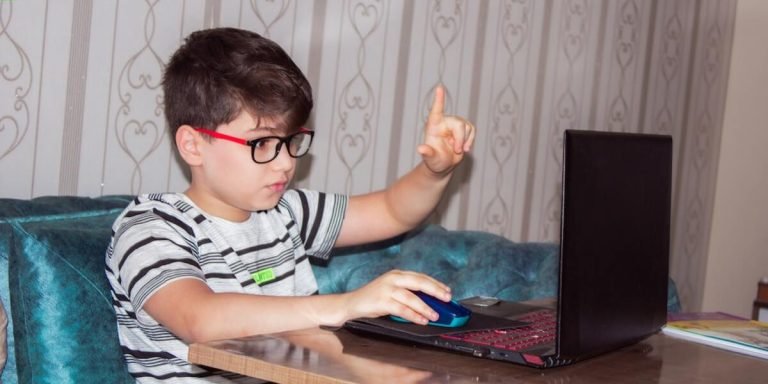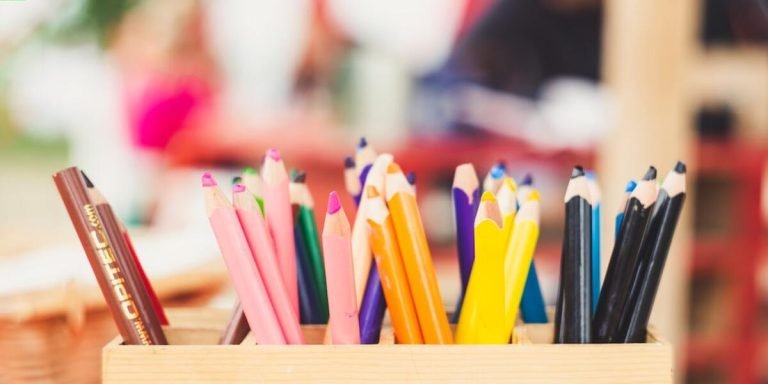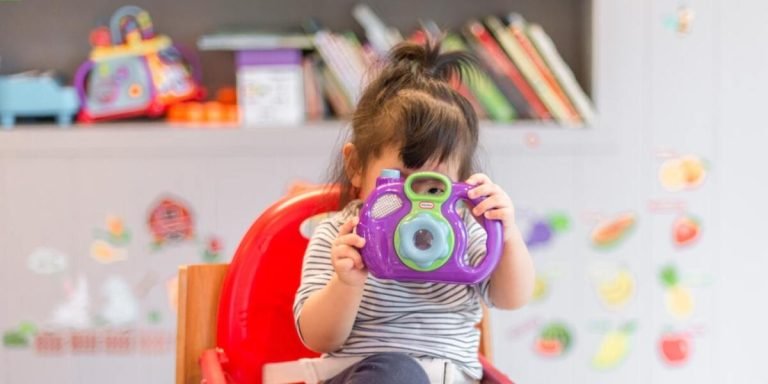For Small Hands: Fostering Independence in Childhood Education
For small hands eager to explore the world around them, early childhood education offers a platform for fostering independence. This critical phase of learning nurtures children’s curiosity and embeds key life skills throughout their academic journey. The significance of maximizing this development stage using tailored educational methodologies cannot be underestimated.
Involving little ones in engaging activities not only promotes cognitive growth but also instills confidence leading to self-reliant individuals. Let us delve into ways that educators alongside parents can harness the potential inherent in these formative years by encouraging autonomous exploration amongst young learners.
Did you know?
Did you know that by the age of five, a child’s brain has reached 90% of its adult size? This early developmental stage is crucial for fostering independence and instilling learning habits in children.
The Importance of Tailoring Learning Tools for Small Hands in Early Childhood Education
With the rapid advancement of technology, it’s becoming ever more crucial in 2023 to integrate digital resources into early childhood education. However, one area often overlooked is tailoring these tools to accommodate for small hands. Understanding and addressing this aspect can significantly improve a child’s learning experience.
While many educational apps and programs are designed with engaging content, developers sometimes fail to consider the ergonomic needs of young children who will be using them – their users usually have tiny fingers not yet adept at navigating standard-sized touch screens or keyboards. Children may become frustrated when they struggle with devices too large or awkward for their hands which could discourage continued use and negatively affect their overall learning process.
Therefore, creating suitable hardware that caters specifically to preschool-aged students should coincide with software development efforts. By adapting shapes, sizes as well as responsive features according to youngsters’ dexterity levels we provide an age-appropriate approach towards technology integration in education—one that fosters ease-of-use and empowers kids through better control over interactive activities hence boosting engagement and enhancing knowledge acquisition.
Understanding Ergonomics: Why Size Matters in Educational Materials
In the realm of early childhood education, understanding ergonomics and tailoring learning tools for small hands doesn’t just enhance comfort – it can significantly influence a child’s capacity to learn. The size and design of educational materials play an essential role in facilitating practical manipulation, fostering engagement, enhancing cognitive development, and promoting overall academic accomplishment.
The concept behind ergonomic-based educational tools emerges from our knowledge about children’s physical attributes at different stages of their growth. Traditional teaching aids have been designed with adults in mind rather than focusing on the younger generation who are still developing fine motor skills crucial for holding pencils or maneuvering touch screens effectively.
Moreover optimization isn’t solely restricted to digital devices; pens paintbrushes musical instruments scissor handles tactile models even board game components if created keeping child-friendly proportions have noted enhanced focus participation resulting increased skill acquisition .
Understanding that ‘size does matter’ offers educators parents opportunity reconsider traditional methods integrating technological advances practising sensitivity towards this perspective reshape pedagogical approaches around suitability usage by little learners consequently aiding navigation through various tasks activities aimed enrichment one’s learning journey making rich engaging experience thereby securing stronger foundational roots love lifelong learning amongst young students .
Sensory Benefits: How Tactile Experiences Aid Child Development
Sensory play, which directly engages a child’s tactile sense, is an essential part of early childhood education. It helps children build cognitive and creative abilities while also fostering their physical development. When these experiences are tailored for small hands in particular, the benefits multiply.
A child’s world is shaped significantly by sensory exploration – feeling different textures, holding various shapes or sizes objects can provide powerful learning opportunities. This sort of engagement not only triggers curiosity but it paves the way to enhance fine motor skills as well – both key aspects around early childhood education.
Especially when talking about technology integration within this context; we see how versatile tools designed specifically for small hands create new dimensions for explorative play and discovery learning. Children engage with interactive screens through touch and sweep motions enhancing hand-eye coordination along with foundational tech-savviness from an earlier age.
Furthermore, tactile experiences stimulate neural pathways between different regions inside a young learner’s brain paving connections across several domains like problem-solving strategies during gaming sessions on mini consoles right down to identifying vaguer subtleties like temperature variations sensed via screen interactions!
Integrating Fine Motor Skill Development with Tools Designed for Little Learners
Nurturing a child’s fine motor skills from an early age is key to their overall development. An effective way educators and parents are adapting this learning process in 2023 is through the integration of technology with tools designed specifically for small hands. These educational resources not only make learning interactive but also fun, engaging children on multiple levels.
When we speak about ‘tools’ here, it doesn’t just mean pencils or crayons; we’re talking about high-tech devices adapted to suit little learners. Such integrated technologies help in fostering an interest towards education while refining their dexterity simultaneously – thus hitting two birds with one stone.
The wave of technological advancements has been engulfing all sectors including Education and Early Childhood Development isn’t far behind. Children these days possess a knack for anything tech-savvy quite instinctively, making device-friendly educative tools extremely popular amongst them as well as convenient for the elders supervising them.
A crucial aspect observed today is that by introducing children to technology aids crafted especially keeping young users in mind (for small hands) at such tender stages helps improve hand-eye coordination along with enhancing cognitive abilities like problem-solving or visual thinking skill sets too!
So while integrating technology into education already proves beneficial generally speaking- leveraging it even further via implementing specific digitalized mechanisms focusing on cultivating fine motor skills undeniably adds more value to any preschool curriculum!
Selecting the Right Educational Resources for Ages 0-5
Consideration forms a priority at this juncture – what sort of equipment aids nifty? Which type join fun and function effortlessly? While providing answers to these questions, remember that comfort and ease-of-use should always trump sophistication when it comes to young learners.
Play dough could possibly be your first go-to option here. Not only does it come cheap but also promotes muscle strength while its pliability offers various shapes by those little hands! Besides being highly appealing due their multi-color presence, play dough enables unrestricted creativity leading them along learning’s playful pathway.
Plasticine clay models form another amicable choice promoting similar benefits as play-dough coupled with stability – models made from plasticine retain their shape longer thereby encouraging detailed observation furthering cognitive development.
Educational toys like peg boards or large-pieced puzzles offer ample scope for improving dexterity too. Their user-friendly layout makes them prime candidates in developing eye-hand coordination along with simple problem-solving abilities making sure all work seem nothing more than child’s-play!
Enhancing Dexterity Through Play-Based Learning Activities
Fostering dexterity in young children isn’t just about preparing them for penmanship or solidifying their grip on utensils. It’s a crucial aspect of holistic development, paving the way for self-sufficiency and confidence building.
Consider traditional play-dough – an age-old favorite among youngsters! When used imaginatively, this pliable substance can be rolled into balls or flattened into shapes by little fingers working diligently on manipulative tasks—thus greatly enhancing manual agility.
While technology integration in education has become more prevalent as we leap further into 2023, it’s equally vital to ensure our resources promote physical engagement along with cognitive advancements. Interactive gaming apps serving up puzzles, quizzes or art-related tasks require kids not only to think but also maneuver objects flexibly within different virtual environments utilizing touch-screen devices.
Even coding toys designed “for small hands” have entered the early childhood education realm these days – they are colorful robots manipulated via programming instructions from your little learners themselves!
Integrating technology doesn’t mean dismissing tradition though; remember those lovable LEGO blocks? They’ve now gone digital too! Virtual brick-building platforms let kids construct intricate structures while honing spatial abilities simultaneously through drag & drop mechanisms.
Creating an Inclusive Classroom Environment with “For Small Hands” Approach
Harnessing technology for the purpose of education has become increasingly vital in today’s digital world, especially when it comes to early childhood learning. The innovative “For Small Hands” approach presents a unique way for educators and parents alike to create an inclusive classroom environment that truly caters towards younger students’ needs.
In essence, “For Small Hands” rests on integrating technological tools that are specially designed keeping in mind the physical abilities and cognitive stages of children. This approach not only embraces educational software but also responsive hardware – think keyboards with larger keys or touch screens at lower heights allowing easy accessibility. Such considerations assist young learners immensely through their natural curiosity while making sure they do not feel overwhelmed by equipment built for adult hands.
Emphasizing this pedagogical strategy is crucial because familiarity breeds comfort; as these small learners gradually acclimate themselves with tech tools made ‘for small hands’, it fosters a sense of inclusion which can drastically improve engagement levels along with initiating critical thinking from a tender age.
Moreover, as we step further into 2023 where remote learning continues forming an important part of our lives due to lingering impacts from previous years; providing equal access becomes even more fundamental—highlighting how valuable such strategies could prove within early childhood education circles.
Additionally, increased confidence may translate into higher competence levels over time thereby leading towards long-term academic success — all starting from just pushing forward child-friendly adaptations within classrooms reiterating why this formative stage should be taken seriously.
Adapting to Various Abilities and Hand Sizes in Preschool Settings
Inclusive education is a necessity in our modern world, with its emphasis on diversity and acceptance. A key strategy to enhance inclusivity in early childhood classrooms involves adapting teaching methodologies suitable for various abilities and hand sizes – an approach we commonly refer to as the ‘for small hands’ method.
Our first focus should be outfitting classrooms with child-friendly tech gadgets ergonomically optimized for tiny fingers and limited motor skills—age-appropriate keyboards, touchscreens easily managed by little ones who are still mastering their fine-motor coordination.
Next comes integrating software that caters specifically towards young learners; interactive applications can provide sensory-rich experiences while being easy enough for them to navigate independently. Moreover, adaptive interfaces help accommodate varying learning styles within the same environment successfully.
Another crucial aspect involving tactile materials facilitate experiential learning—a vital component when targeting burgeoning developmental stages amongst toddlers—intricate jigsaw puzzles or textured storybooks can be instrumental here too! These simple yet effective techniques not only boost cognitive capabilities but also promote independence among children at such tender ages sustaining long-term educational growth.
Cultivating Independence: Empowering Young Kids with Appropriate Tools
In the field of early childhood education, cultivating independence among youngsters is no less than an art. One particular approach that has been making remarkable strides in this arena is known as “For Small Hands.” This methodology fosters autonomy and confidence by arming kids with age-appropriate tools – a strategy which acknowledges their innate desire to explore, learn and grow.
The “For Small Hands” approach understands the significance of right-sized apparatuses for small children. Just consider how cumbersome our daily tasks would be if all our utensils were excessively big or oddly shaped! The same concept applies to young learners’ environments too, where having access to suitable equipment can dramatically influence learning outcomes.
Initially designed around Montessori principles, this method’s application extends far beyond traditional settings today. By offering child-friendly versions of everyday items – from forks and spoons to brooms and dustpans – it encourages active participation in various activities while simultaneously promoting self-reliance.
What sets “For Small hands” apart is its broad spectrum nature; whether you’re trying to teach math concepts using fraction circles or introducing kids to gardening through adequate horticultural tools — it’s about enveloping them into real-world experiences at their own pace!
Conclusion
In conclusion, nurturing independence “for small hands” may appear challenging at first but it’s an investment that reaps immeasurable results in the long run. It equips our youngsters with vital survival skills, fosters resilience and aids them to grow into well-rounded individuals who can navigate life successfully.
Don’t stop here, consider this article as just a stepping stone towards becoming successful educators or parents of future leaders. On our website you will find numerous resources on childhood education specially curated for your needs that provide insightful strategies and techniques designed specifically for effective teaching and parenting methods. Be sure to browse around – there is much more waiting for you!







